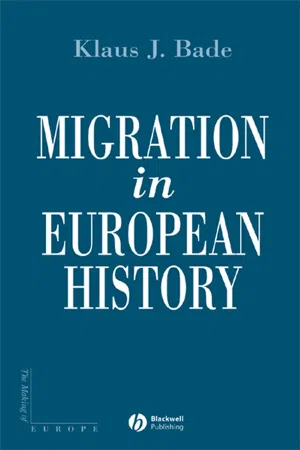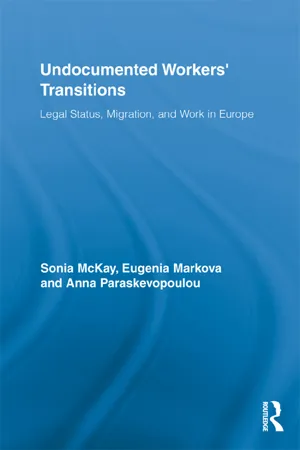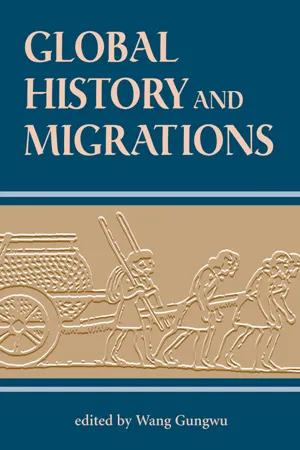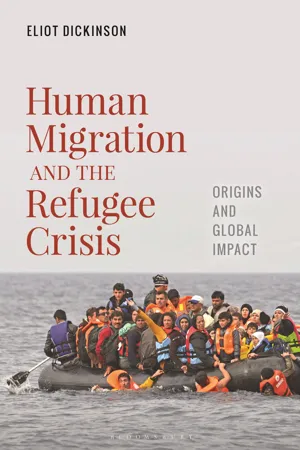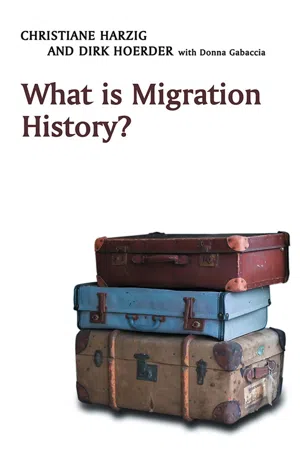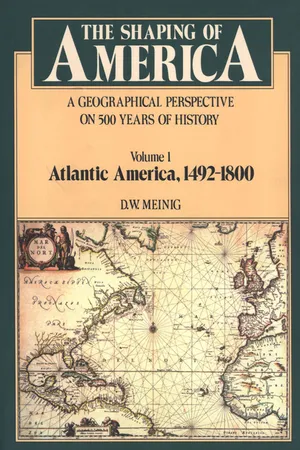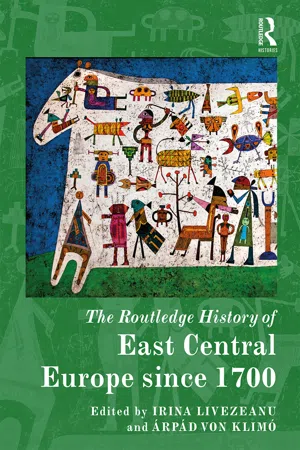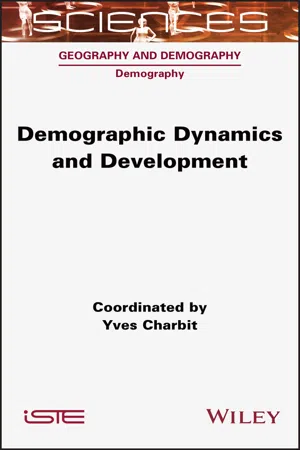History
European Migration to the New World
European migration to the New World refers to the movement of people from Europe to the Americas during the Age of Exploration. This migration had a profound impact on the indigenous populations and led to the establishment of European colonies in the New World. It also facilitated the exchange of goods, ideas, and cultures between Europe and the Americas.
Written by Perlego with AI-assistance
Related key terms
1 of 5
10 Key excerpts on "European Migration to the New World"
- eBook - PDF
- Klaus Bade, Allison Brown(Authors)
- 2008(Publication Date)
- Wiley-Blackwell(Publisher)
One problem with interpreting mi- gration processes with an eye to economic history is in how to deal with highly aggregated data on migration from major regions with different economic and social structures. The western, central and northern areas of Europe from which the ‘old’ emigration movements set out were, in 100 Migration in Nineteenth- and Early Twentieth-century Europe some respects, similar in many ways to the United States. Though the United States progressed from agrarian to industrial society more rapidly than these parts of Europe, they were nevertheless related in terms of structure and course of developments. This comprehensive picture of the Atlantic realm was eclipsed from the 1890s by the new immigration from southern, south-eastern, east central and eastern Europe, which, for example, hardly reacted at all to the economic crisis in the United States in the early 1890s. Emigration regions and transatlantic networks Baines has succinctly characterized the basic structures of overseas mass emigration from nineteenth- and early twentieth-century Europe: 'The most important characteristic of European migration was diversity.' It is clear that we actually know very little about the driving forces behind the transatlantic exodus by the mere fact that the vast majority of Europeans stayed in Europe and did not leave behind the very conditions that research has assumed to have driven people to emigrate. By far most Europeans remained in the Old World, adapted to its conditions, tried to change them within the bounds of possibility or escape them by migrat- ing within Europe. A series of changes took place in the structure of transatlantic migration from the early nineteenth to the early twentieth centuries. Emigration from western, central and northern Europe changed from what was sometimes still religiously and socially motivated group migration in the late eight- eenth and early nineteenth centuries to family and then to individual migration. - eBook - ePub
Undocumented Workers' Transitions
Legal Status, Migration, and Work in Europe
- Sonia McKay, Eugenia Markova, Anna Paraskevopoulou(Authors)
- 2012(Publication Date)
- Taylor & Francis(Publisher)
Throughout history, migration has been a feature of human societies, as for most of our history humans led mainly a nomadic life and the search for food or new resources was the primary motivation for finding new and habitable areas. As populations spread and more permanent settlements started to develop, migration continued to take place, often through more complex patterns of warfare and conquests, slavery and colonialism (for example, Greek or Roman in the ancient period), epidemics or religious opposition (such as the Iconoclasts fleeing the Byzantine Empire).Similar reasons for migrating populations can also be found in later periods. So in the middle ages and before the industrial revolution four main causes of migration can be distinguished. First, religion, either in the form of religious persecutions or due to the constitution of new religious sects, became the cause of movements of populations within Europe or the emigration of Europeans to America, but also to other parts of the world. For example, the rise of Protestantism through the reformist movements of Luther and Calvin were embraced as a new religion in some European countries but suppressed in others, depending on the preferences of the monarchs. Thus between the 15th and 17th century, religious refugees such as the Huguenots in France, the Protestant Dutch from the South, and the Jews and Moors of Southern Spain (to name but a few) escaped to countries where Catholicism was not the official religion. Religious migration also took place to areas outside Europe, such as the Purists’ movement to America or the secondary migration of the Huguenots to South Africa.The next three types of migration closely relate to the Mercantilist period (which extends beyond the 17th century) and includes economic migration, colonialism, and slavery. First, this is a period of general changes in Europe with a pronounced effect on economic systems. Political and economic transformations were closely related to ideas that gave rise to the new political landscapes, with the creation of nation states as a predominant form of government unit, together with the concept of national sovereignty. This period is characterised by economic expansion and at the same time by the growing intervention of the state apparatus in the national economy. - eBook - ePub
- Gungwu Wang(Author)
- 2018(Publication Date)
- Routledge(Publisher)
2 Moving Europeans in the Globalizing World: Contemporary Migrations in a Historical-Comparative Perspective (1955–1994 v. 1870–1914) Ewa Morawska and Willfried Spohn The purpose of this chapter is twofold. On the one hand, we illuminate the main mechanisms, forms, and patterns, at macro and micro levels, of post—World War II mass migrations of the Europeans in the context of quickening globalization. On the other hand and simultanously, we compare and contrast those mechanisms, forms, and patterns with those of the earlier high wave of population flows across and beyond the European Continent that occurred at the time of the “densification” of long-distance interconnections in the so-called Atlantic world-system, between 1870 and 1914, so as to identify and elucidate the continuities and discontinuities between these two movements. As a brief synthesis of an extensive and complex subject, our discussion unavoidably simplifies the matters dealt with; we have been careful to formulate the generalizations that, in our judgment, “stand” despite the existence of nonsupportive cases and justified reservations regarding aggregation of nonidentical territorial or social units. 1 Our understanding of the major concepts used in this chapter should be briefly explained before we move on. First, the concept of migration denotes one-way as well as repeated movements across nation-state boundaries or within the multinational community (such as the now-borderless EC) for permanent or shorter- and longer-term sojourns - eBook - ePub
Human Migration and the Refugee Crisis
Origins and Global Impact
- Eliot Dickinson(Author)
- 2023(Publication Date)
- Bloomsbury Academic(Publisher)
Homo sapiens continued their global migration and crossed from North Asia into the Americas at least 20,000 years ago. Presumably aided by the aforementioned “migration gene,” these proverbial “First Americans” then walked down the North American continent into Central America and arrived at the southern tip of South America approximately 12,000 years ago. This was a major milestone, as it marked the point at which modern humans had spread across the entire planet.Figure 2.1The migration of modern humans out of Africa and around the world. (ABC-CLIO)European Exploration and Transoceanic MigrationSpace does not permit a full accounting here of the many mass migrations that have occurred across the African and Eurasian continents over the last several thousand years. For more detailed descriptions, readers are invited to consult Dirk Hoerder’s Cultures in Contact: World Migrations in the Second Millennium (2002), Patrick Manning’s Migration in World History (2004), and the Encyclopedia of Global Human Migration (2013). It suffices to say that, from a planetary perspective, a decisive moment in the timeline of global migration came when Europeans crossed the North Atlantic to the Americas. The Vikings were the first to do so in about the year 1000 when Leif Erikson reached what is now the Canadian province of Newfoundland. Although the Viking settlement there ultimately failed, it was a precursor to the subsequent European colonization of the Americas.In the mid-14th century, Europe began transitioning from feudalism (a medieval social system in which the peasant masses lived and worked in fiefdoms dominated by local lords) to the Renaissance (a rebirth of civilization that produced a flurry of revolutionary new ideas and inventions). Johannes Gutenberg (c. 1400–1468), for example, invented the movable type printing press that allowed the written word to be more widely shared than ever before. Niccolò Machiavelli (1469–1527) wrote The Prince - eBook - ePub
- Christiane Harzig, Dirk Hoerder, Donna R. Gabaccia(Authors)
- 2013(Publication Date)
- Polity(Publisher)
When Christian Europe divided itself into Catholic, Protestant or Reformed, and many smaller confessions, religious strife generated refugees. The Thirty Years’ or First European War (1618–48) left one-third of Central Europe’s population dead; whole regions needed in-migrants to regain socio-economic viability. Huguenots (Reformed Protestant refugees from Catholic France) carried their entrepreneurial and mercantile knowledge to other Protestant societies. Puritans, from England, fled first to the Protestant Netherlands, then to North America. Culturally unprepared, they had to rely on Native Peoples to survive. Intra-European migrations of religious refugees, rural–urban, inter-urban, or of peasants in search of land or wages, surpassed the long-distance migrations to the South Russian plains or to the Americas. In relation to population, Dutch migration levels were higher in the seventeenth century, at the apogee of colonizing outreach, than in the twentieth century. In mid-seventeenth-century Europe, several long-term migration regions emerged. The Netherlands became the center of attraction in the North Sea system; central Spain attracted labour migrants from south-central France (mostly single men who married locally); and the Baltic Sea’s littoral societies attracted migrants of many trades and skills. Agrarian migrants headed to the South Russian plains and to urban labour markets.In the Americas, migrations of Native (or First) Peoples had involved continual peaceful economic exchanges and inter-tribal wars. With the arrival of Europeans, northern mobile or sedentary societies supplied the fur for a trade financed in London–Amsterdam–Paris–Moscow and extending northward and eastward to Scandinavia and Siberia. A circum-global northern fur trading sphere emerged. Mesoamerican societies, decimated and weakened, were unable to survive independently and were relocated against their will. First Peoples and African slave men and women, as well as European-origin colonizer elites, fused into new sixteenth- and seventeenth-century societies in the Caribbean, New Spain, and Portuguese Brazil. In North America, migrants from New Spain (modern Mexico) arrived in Florida and New Mexico; Catholic French migrants went to the Carolinas and the Saint Lawrence and Mississippi valleys. The anglophone Puritans, who credited themselves with pioneering the settlement, arrived late. Religious refugees from intolerant European states settled Maryland and Pennsylvania; Irish men and women fled English colonial rule, while Scottish Highland crofter families were displaced by their own upper classes, who deprived them of their sustenance-producing family plots for the new economy of sheep raising. Most of Europe’s poor could not afford the cost of the transatlantic voyage. They sold their labour for three to seven years to ship captains, who then sold them as indentured labourers in the mainland and Caribbean colonies. The Protestant English-speaking migrants of “New England” later expunged such diversity from historiography and memory. - eBook - PDF
- Michael Adas(Author)
- 2010(Publication Date)
- Temple University Press(Publisher)
M igration is a basic feature of the human species. Along with muta-tion and natural selection, it is one of the three basic mechanisms of human evolution. The movement of primates in central Africa gave birth to the first hominids some 5 million years ago. Movement made possible the appearance of every hominid species since then, including our own some 150,000 years ago, and the spread of Homo sapiens from our African cradle to every major area of the planet since 50,000 b.p.. These migratory currents have connected all the continents since 1500 C.E., helping create the political, social, and ethnic landscapes of the world today. Premodern societies were far from static. 1 But we cannot project this fact into a history of mobility that is one of simple continuity or gradual change. The conceptual association of mobility and modernity is not just a teleologi-cal assumption. Moving may have been one of the elemental activities of our species, along with eating and reproducing, but mass movement was a new phenomenon—as was the related “massification” of reproduction, production, trade, and transportation, as well as communication, consumption, and cul-ture. Mass migration is an integral part of these broader global processes that have shaped the modern world. Dating the shift is—like the periodization of any social process—a slippery affair. But for mass migration, and for some of the other linked processes, the first half of the nineteenth century offers a more meaningful turning point than the beginning of the twentieth. The decades since 1840 have witnessed a strik-ing and unprecedented increase in the human population, in industrial and ag-ricultural production, in global trade and its shift to nonluxury commodities, CH APTER 1 World Migration in the Long Twentieth Century _ Jose C. Moya and Adam McKeown - eBook - PDF
The Shaping of America
A Geographical Perspective on 500 Years of History, Volume 1: Atlantic America 1492-1800
- D. W. Meinig(Author)
- 1986(Publication Date)
- Yale University Press(Publisher)
Most emigrants came as individuals, some as families, only a few as cohesive congrega-tions. Most shiploads were diverse, although at times mainly gathered from the same general district through the efforts of some emigrant agent; very few were made up entirely of a group already closely associated in Europe. This shared experience of emigration may have further modified differences stemming from the variety of European backgrounds. MIGRATION AND CHANGE 219 The acculturation resulting from such resorting of people within Europe and en route to America represents another kind of simplification of society. However, there is another side to these processes that had quite the opposite effect. For these American societies were being formed at a time when the boundaries between certain social groups were being more firmly defined. The reverberations of the Reformation echoing down through the generations in warfare, persecutions, legal discrimination, and social pressures together with the enlarging possibilities of personal choice in religious affiliation and a broadened sense of nationality height-ened ethnoreligious consciousness. It was not that a high proportion of emigrants were especially pious, or even regular churchgoers, but that such identities, whether consciously selected or merely assigned, were a major feature in the reordering of European societies. And it was the kind of social mobilization that might be intensified through the trauma of emigration and the challenge of pi-oneering. Thus some groups undertook colonization in America with a sense of identity and purpose surpassing anything they could have developed in Europe. These same kinds of contradictory trends were apparent on the North American side of this transatlantic movement. There were further simplifications as well as diversifications. The American setting precluded any real duplication of European landscape, economy, or society, whatever the plans of proprietors. - Irina Livezeanu, Arpad von Klimo, Irina Livezeanu, Arpad von Klimo(Authors)
- 2017(Publication Date)
- Routledge(Publisher)
7 p.127This chapter focuses on key developments in the migration history of East Central Europe: from “mixing” of various ethno-linguistic and religious communities in the period of empires to “unmixing” after the triumph of the nation-state; from routine labor and seasonal migrations to more sustained economic and overseas migrations beginning in the late nineteenth century; and, finally, from Cold War travel restrictions to renewed economic and ethnic migrations after the collapse of communism. In the earlier centuries of military conquest and political or religious conflict, population movements created borderland areas between and within empires where populations of diverse ethnicities, languages, and religions were intermixed. This intermixing was accompanied by parallel labor and economic migrations, which included long-distance rural-to-rural migrations but also an increasing number of rural-to-urban and transatlantic migrations. Thus, demographic and economic pressures were the leading causes for migration in the long nineteenth century due to the lack of economic opportunities and an increasing population. But as nation-states made their appearance in the region, the state became instrumental in causing and directing migration in order to create nationally homogeneous states. Ultimately, the “ethnic unmixing” of the Habsburg, Ottoman, and Russian Empires following World War I and the continued displacement of populations during and after World War II redrew the borders of Europe along putative ethnic and national lines. Warfare was a central cause of migration during this period; as modern war practices increasingly targeted civilian populations, war and migration went hand in hand. In contrast, the post-1950 period saw more limited migration movements connected to the drive for modernization in the area under communist control, and only occasional overseas political or ethnic migrations (such as those of Jews to Israel or Germans to Germany). The collapse of communism revived old migration practices of an economic character and led to the last phase of “ethnic unmixing” in the territories of former Yugoslavia. However, after the turbulent period of early post-socialism, migration practices leveled off, following the integration of the East Central European countries into the European Union.- eBook - PDF
- Yves Charbit(Author)
- 2022(Publication Date)
- Wiley-ISTE(Publisher)
The first groups knew little about their destination and could not easily return home, but as migration streams developed and steam ship companies facilitated transportation, the men and women who crossed the oceans knew more about what awaited them and were more able and more likely to return home. Two trends explain this massive migration. The demand for labor increased in the farms and cities of North America and in the sugar and coffee plantations of Latin America, partly because the slave trade, then slavery itself, was abolished. Moreover, Europe’s “hungry forties”, the potato famine and political struggles exacerbated suffering and unemployment on a continent whose population was greater than ever before (Moch 2003). 7.5. European migration in the 20th century World War I proved to be a death knell not only for millions of Europeans, but for free migration as well. The previous century of relatively free mobility gave way to a time in which states directly sponsored, regulated and forced migration. The status of foreigners became more salient. In wartime, neither armies nor civilians moved by choice. State control between the wars and after World War II allowed workers to cross borders in great numbers in response to labor shortages, and often in response to recruiting efforts and bilateral government agreements. The history of worker migrations in the 20th century is sharply divided into two periods. A so-called “second thirty years’ war” decimated the population and minimized the movement of free labor, 1914–1945. International labor migration was controlled by hostilities until 1919; post-war rebuilding took the energies of surviving workers; transatlantic migration was squelched when the United States dramatically narrowed immigration quotas in the 1920s; the international depression of the 1930s so reduced the demand for labor that some nations closed their borders to foreign workers. - eBook - PDF
Cultures in Contact
World Migrations in the Second Millennium
- Dirk Hoerder, Andrew Gordon, Alexander Keyssar, Daniel James, Andrew Gordon, Alexander Keyssar, Daniel James(Authors)
- 2002(Publication Date)
- Duke University Press Books(Publisher)
Internal Euro-American westward migration dislocated Amerindian peoples into involuntary westward moves. 23 The portrayal of settlement as one broad and continuous westward movement glosses over the multifaceted history of internal migration. Internal improvements—road and canal construction as well as the building of the first railroads—mobilized un-skilled labor for earthworks and, after completion, facilitated travel of additional mi-grants. In New England, newcomers from old England introduced textile machinery. Textile mills, because of the ready access to waterpower built in places with no pre-vious settlement, attracted farm families’ daughters. Their brothers often migrated west to lands more fertile than the local hills. Since the young women could circulate between work on the parental farm and wagework, they diversified family incomes and could organize and strike when working conditions deteriorated after the depres-sion of . From the s on, factory owners replaced the self-confident mill ‘‘girls’’ with Irish families whose famine migration made them a cheaper labor force, pre-cluded their return home, and prevented—at first—labor militancy. The Irish were joined by Catholic French-Canadians from the St. Lawrence valley, where high num-Fur Empires and Colonies of Agricultural Settlement bers of children and slow industrialization hindered the development of local job op-portunities. 24 The ports of New York, Philadelphia, and Baltimore in the mid-Atlantic states (and later, on the Gulf, the ports of New Orleans and Galveston) were the urban re-ceptacles or transit stations for the ever-increasing number of arrivals from Europe. Many stayed in the cities, at least temporarily; others moved west. Further south, the plantation economy shifted to cotton and moved from the exhausted soils along the tidewater to, first, the piedmont of the Alleghenies and, then, across the ridge to lands east of the Mississippi.
Index pages curate the most relevant extracts from our library of academic textbooks. They’ve been created using an in-house natural language model (NLM), each adding context and meaning to key research topics.
